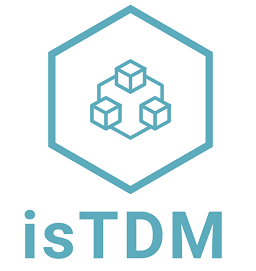Definition(s):
It supports identifying different TD types that may emerge in the software lifecycle. To this end, specific actions should be performed, such as defining and using indicators to identify and track TD items. For example, code analysis and software metrics can track TD in the source code, such as Code Debt, Design Debt, and Architecture Debt. In addition, some available SE tools are claimed to support TD identification. In addition, Definition of Done (DoD) is a strategy to identify different TD types.
Source(s):
- Ampatzoglou, Areti, et al. “The financial aspect of managing technical debt: A systematic literature review.” Inform. Softw. Technol., 64 (2015), pp. 52-73.
- Li, Zengyang, Paris Avgeriou, and Peng Liang. “A systematic mapping study on technical debt and its management. Syst. Softw., 101 (2015), pp. 193-220.
- Alves, Nicolli SR, et al. “Identification and management of technical debt: A systematic mapping study.” Inform. Softw. Technol., 70 (2016), pp. 100-121.
- Fernández-Sánchez, Carlos, et al. “Identification and analysis of the elements required to manage technical debt by means of a systematic mapping study.” J. Syst. Softw., 124 (2017), pp. 22-38.
- Behutiye, Woubshet Nema, et al. “Analyzing the concept of technical debt in the context of agile software development: A systematic literature review.” Information and Software Technology 82 (2017), pp. 139-158.
- Besker, Terese, Antonio Martini, and Jan Bosch. “Managing architectural technical debt: A unified model and systematic literature review.” J. Syst. Softw., 135 (2018), pp. 1-16.
- Becker, Christoph, et al. “Trade-off decisions across time in technical debt management: a systematic literature review.” Proceedings of the 2018 International Conference on Technical Debt. ACM (2018), pp.85-94.
- BenIdris, Ammar, Dzielski. “Investigate, identify, and estimate the technical debt: a systematic mapping study.” Int. J. of Softw. Eng. Appl (IJSEA), Vol. 9 (5), (2018), pp.1-14.
- Verdecchia, Roberto, Ivano Malavolta, and Patricia Lago. “Architectural technical debt identification: The research landscape.” Proceedings of the 2018 International Conference on Technical Debt. ACM (2018), pp. 11-20.
- Khomyakov, Ilya, et al. “Automated Measurement of Technical Debt: A Systematic Literature.” Proceedings of the 21st International Conference on Enterprise Information Systems (ICEIS 2018) (2016), pp. 95-106.
- Klimczyk, Paweł, and Lech Madeyski. “Technical Debt Aware Estimations in Software Engineering: A Systematic Mapping Study.” e-Informatica Software Engineering Journal 14.1 (2020), pp. 61-76.
- Lenarduzzi, Valentina, et al. “A systematic literature review on Technical Debt prioritization: Strategies, processes, factors, and tools.” Syst. Softw., 171 (2020): 110827.
- Alfayez, Reem, et al. “A systematic literature review of technical debt prioritization.” Proceedings of the 3rd International Conference on Technical Debt (2020), pp.1-10.
- Dalla, L. O. F. B. “Systematic Mapping on a metaphorical issue of Technical Debt framework.” International Journal of Health and Pharmaceutical Research E-ISSN 2545-5737 P-ISSN 2695-2165, Vol 5. (3), (2020).
- Jeronimo Junior, Helvio, and Guilherme Horta Travassos. “Consolidating a Common Perspective on Technical Debt and its Management Through a Tertiary Study.” Information and Software Technology (2022): 106964.
